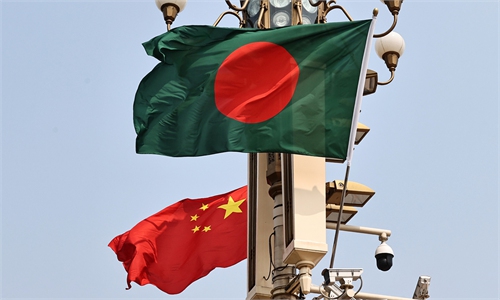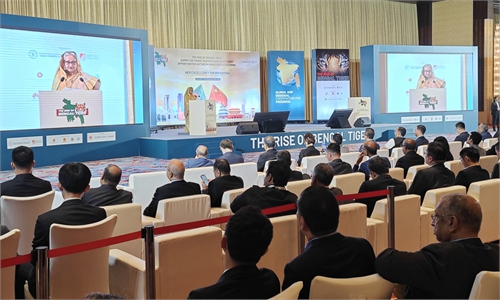
Illustration: Tang Tengfei/GT
There is still a long way for Chinese automakers to realize internationalization of their operations in the Southeast Asian market, although the fact is that they have become increasingly competitive, and their rise has triggered a sense of crisis among competitors.
Reuters reported recently that Honda Motor will halt vehicle production at its factory in Ayutthaya province in Thailand by 2025 as it plans to consolidate its output under the plant it runs in Prachinburi province. "The move highlights the tougher conditions Japan's second-biggest automaker faces in the Southeast Asian nation as Chinese brands aggressively seek to gain market share in Thailand and consumer demand for electric vehicles grows," Reuters reported.
It sounds like a variation of Western anxiety about the remarkable rise of China's electric vehicle (EV) makers, or, frankly speaking, another version of the "China threat" theory. As the competition escalates, some Western media outlets have increasingly focused on geopolitical games and have played up the "China threat" theory, but the narrative cannot help tap potential for mutually beneficial cooperation. It would instead only hinder normal business cooperation and disrupt the regional supply chain.
Some statistics showed electric car sales neared 14 million in 2023, 95 percent of which were in China, Europe and the US. Although Southeast Asia has a great potential for future growth, it is still in its initial stage of development when it comes to EVs. In Southeast Asia, motorcycles are a popular mode of transportation due to their affordability, fuel efficiency, and ability to navigate through congested urban areas. The penetration rate of EVs in some Southeast Asian countries is less than 10 percent.
China's EV sector has witnessed rapid growth. The competitiveness of made-in-China EVs comes from continuous technological innovation, high labor productivity, and complete supply chains. However, if Chinese EV makers want to further increase their presence in the Southeast Asian market, it may be not smooth sailing ahead, and in the process, setbacks are inevitable. A key barrier they face in some Southeast Asian countries is the absence of public charging infrastructure, which could hinder large-scale adoption of EVs.
Japanese cars hold a considerable share of new car sales in Southeast Asia. They have built up their presence in local production and sales since the 1950s. Chinese automakers cannot shake the position of Japanese companies overnight, especially in the non-EV sectors.
Of course, Japanese enterprises now face tougher competition from Chinese rivals as their advantages over Chinese companies have gradually waned. To take the example of Honda, Reuters said the company's sales in Thailand have been under 100,000 for each of the four years through 2023. However, if Japanese companies are going through difficult times, they should first find the reasons from themselves rather than blame normal commercial competition. Competition is not a bad thing. The auto and auto-related industries can only truly grow and get stronger through full competition.
A closer look into Asian industrial and supply chains shows that at a time when the US-led West has strengthened the crackdown targeting China's EV sector, the country is still closely connected to the Asian industrial chain, and supply chain restructuring has been accelerated. Some Southeast Asian countries are now at a critical stage of ramping up their manufacturing, and the EV sector is an industry with great potential.
China-ASEAN cooperation can help Southeast Asian countries to accelerate the transition to a green economy, and promote further development of their auto industries. China has advantages in these aspects. Our cooperation is not only mutually beneficial, but more importantly, it is more in line with the actual development needs of Southeast Asian countries.
The ASEAN market is large enough to accommodate local enterprises, and companies from China, Japan and other countries. There is great potential for cooperation in the auto and auto-related industries.
The author is a reporter with the Global Times. bizopinion@globaltimes.com.cn



